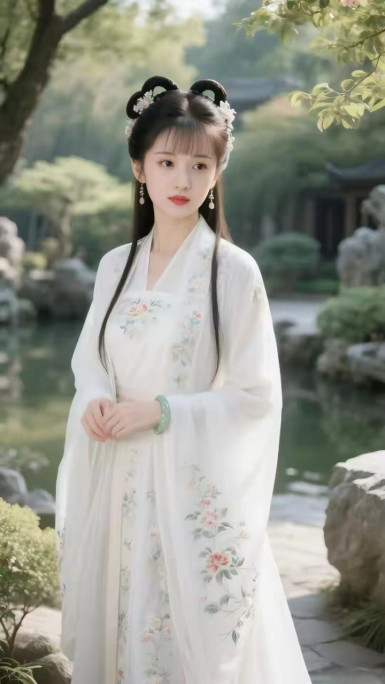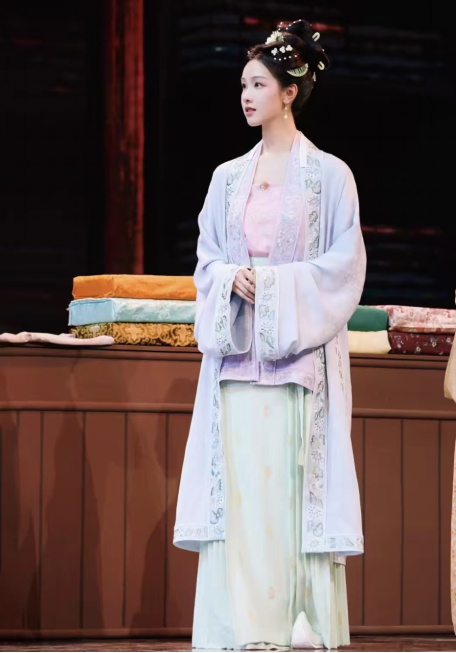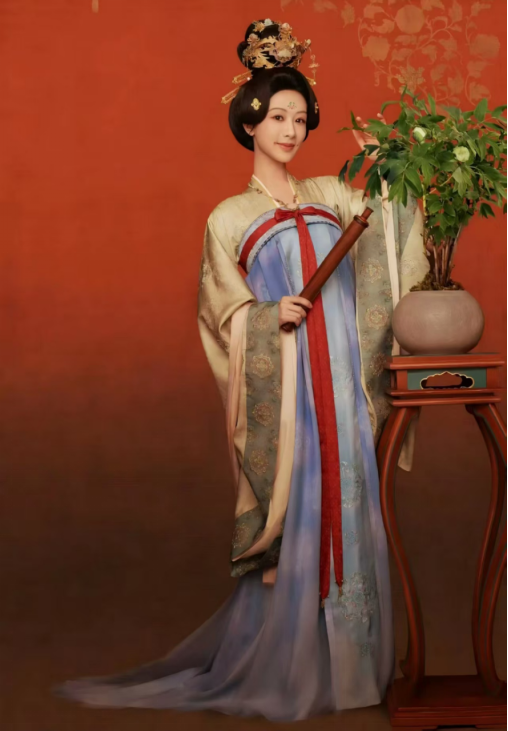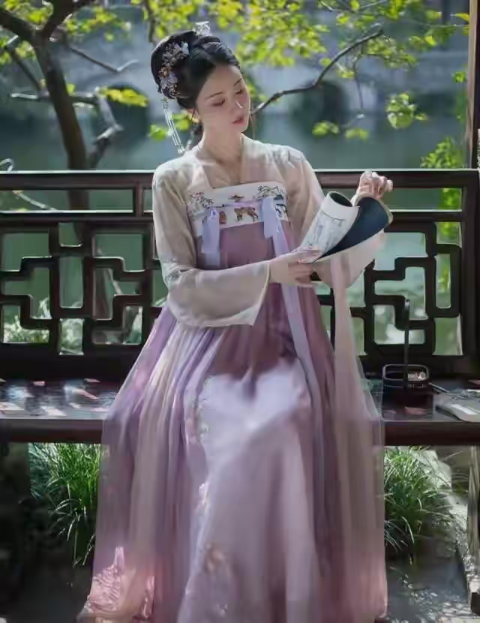In recent years, with the vigorous development of the Hanfu revival movement, Hanfu has appeared everywhere in life. It can be seen from street corners to international fashion weeks, and from restoration shows to daily wear. As the traditional costume of the Han nationality, Hanfu not only embodies the wisdom of China’s thousand-year-old civilization, but also is full of the unique costume aesthetics of the Chinese nation. This article will guide you to explore the most beautiful styles of Hanfu and appreciate the charm of these magnificent garments.

What Are the Beautiful Styles of Hanfu?
There are many beautiful styles in the Hanfu system. We have summarized the following most beautiful ones based on aesthetic concepts, wearing experience and popularity:
First is the high-waisted ruqun (chest-high skirt), which we are quite familiar with. It first appeared during the Southern and Northern Dynasties and developed vigorously in the Tang Dynasty. The waist of this ruqun is tied very high, reaching above the chest. This design makes the wearer look slender and pretty. When matched with a belted upper garment, it has become a choice for many people in the current Hanfu market.
Different from the high-waisted ruqun, another most beautiful style is the Ming Dynasty aoqun (jacket and skirt). The overall style of aoqun is gentle and elegant. The matching of an upper jacket and a lower skirt creates a soft temperament. When paired with different patterns or capes of various styles, it shows the dignified and delicate characteristics of aoqun, making it a popular choice among current Hanfu styles.
Third is the combination of Song Dynasty beizi (a traditional outer garment) and pleated skirts. The style of Song Dynasty Hanfu is characterized by a faint elegance and restraint, which is very in line with the spiritual realm of scholars in the Song Dynasty. Song Dynasty Hanfu is very suitable for quiet and literary girls today, as it can highlight their most simple spiritual temperament.

Modern Hanfu Styles
Modern Hanfu styles, while preserving the basic structure of traditional Hanfu, have incorporated innovations in fabrics and personalized choices in patterns and designs. They have also made more adjustments in design details to cater to public tastes. Many designers have further integrated intangible cultural heritage (ICH) techniques into the craftsmanship of Hanfu making, allowing Hanfu to bear imprints of traditional elements from all corners of the country and various ethnic groups.
The application scope of Hanfu has been continuously expanding. Thanks to these efforts, in the context of the new-generation apparel transformation, Hanfu has managed to break through the competition, move towards a new stage of higher-quality development, and create a fashion clothing world unique to the Chinese people.
At present, although Hanfu is more popular than ever before, many people still have questions. For example, how to effectively integrate Hanfu with modern fashion, and how to choose the right Hanfu.
First, modern Hanfu design achieves integration with fashion in many ways. Designers extract the “genes” of Hanfu, follow traditional structures, fabrics and patterns, and combine modern needs and aesthetic concepts to create Hanfu that is more suitable for modern people. This further integrates practical elements with modern clothing.
Second, to choose the right Hanfu, you first need to know your body data accurately, such as height, weight and three measurements. Then carefully compare the size chart. Based on your body data, you can then choose the Hanfu style that suits you. You should try more styles, carefully compare them, and finally confirm the right style and structure. In addition, you need to carefully check the fabric and the cutting of the Hanfu.


Classic Hanfu of Past Dynasties
The table below introduces the typical Hanfu styles of major dynasties, hoping to help you make a choice:
| Dynasty | Typical Hanfu Styles | Design Features | Aesthetic Significance |
| Pre-Qin Period | Yishang system (separate upper garment and lower skirt) | The upper garment and lower skirt are cut separately; it is the oldest Hanfu structure. | Establishes the basic framework of Hanfu and reflects the earliest costume etiquette. |
| Han Dynasty | Quju shenyi (deep garment with twisted collar) | The collar has a spiral winding shape, with the “xuren goubian” (continuous placket and hooked edge) technique. | Features smooth and graceful curves, embodying the philosophical thought of “the cyclic nature of heaven”. |
| Southern and Northern Dynasties | Zaju chuishao fu (garment with hanging ribbons) and tanling ruqun (collarless ruqun) | Highlights flat cutting; creates dynamic beauty through “xianshao” (thin ribbons). | Reflects the ideological trend of “transcending Confucian norms and following nature” of the era, with an elegant and lively look. |
| Tang Dynasty | High-waisted ruqun and yuanling pao (round-collar robe) | The skirt waist is tied high above the chest; absorbs elements of Hu costumes (costumes of ethnic minorities in northern China); has loose sleeves. | Embodies the integration of diverse cultures and shows the open and confident demeanor of the Tang Dynasty. |
| Song Dynasty | Beizi and Song-style trousers | Features a minimalist design with a straight collar and front opening; breaks gender boundaries. | Responds to the Confucian idealist school’s proposition of “upholding heavenly principles and suppressing human desires”, with a simple and elegant style. |
| Ming Dynasty | Aoqun and tieli pao (close-fitting robe) | The upper jacket can be lined with cotton; the lower skirt is mostly a maming qun (horse-face skirt); “36 pleats” imply the number of days in a year. | Has a dignified and delicate look, embodying the gentle and restrained aesthetic taste. |







